![]()
![]()
![]()
Use LEFT and RIGHT arrow keys to navigate between flashcards;
Use UP and DOWN arrow keys to flip the card;
H to show hint;
A reads text to speech;
34 Cards in this Set
- Front
- Back
|
Beilschmiedia tawa |
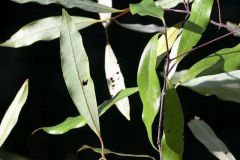
Drooping,willowy foliage with wavy margins. Long leaves widest in the middle. Thintexture. |
|
|
Carpodetus serratus |
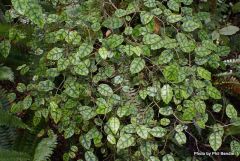
Vivid,dark leaf veins on bright green leaves. Distinctive angular branching pattern |
|
|
Coprosma foetidissima |
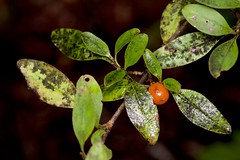
Small(2-5cm), opposite leaves that taper along petiole. Distinctive, unpleasantsmell when leaves crushed |
|
|
Coprosma propinqua |
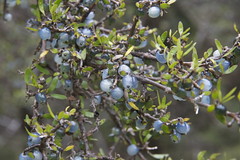
Verysmall leaves (<1cm), bright blue berries |
|
|
Dacrycarpus dacrydioides |
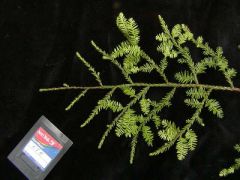
Bothforms of foliage present on pictured leaf: juvenile foliage (larger leaves in aflat plane, right hand side) and adult foliage (smaller scale leaves, left handside). |
|
|
Dacrydium cupressinum |
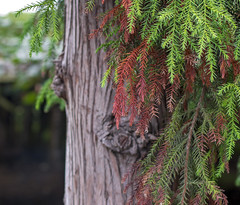
Rimu hasscale leaves like kahikatea, but larger, and distinctively drooping |
|
|
Elaeocarpus dentatus |
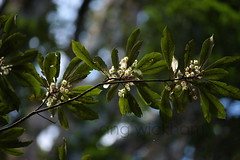
Oblanceolateleaves with finely toothed margin part way or all the way down the leaf blade.Green leaf on top, and lighter / whitish underneath, slightly hairy. |
|
|
Griselinia littoralis |
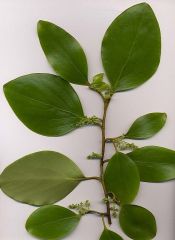
Distinctive, large bright green leaves, with asymmetrical leaf base.Margins can be wavy |
|
|
Halocarpus bidwillii |
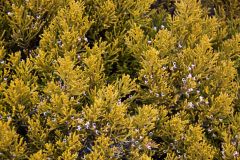
Up to 4mhigh but usually much smaller. Imbricate leaves. Usually growing in boggyground and also known as Bog Pine - common on Ruapehu. |
|
|
Libocedrus bidwillii |
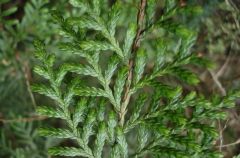
Scaly coniferous leaves, stringy bark. Found as an emergent tree insubalpine beech forest (Ruapehu) |
|
|
Melicytus ramiflorus |
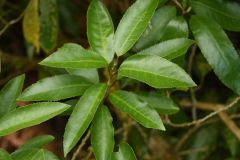
Small tree reaching 10m, white bark |
|
|
Nestegis cunninghamii |
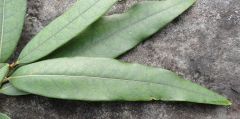
Vivid green leaves, with distinctive whitish mid-rib and dark minorvenation. Lanceolate leaf shape, and thick, olive-tree leaves |
|
|
Nothofagus fusca |
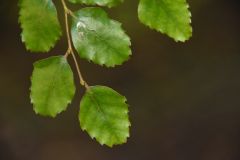
Small ovate leaveswith distinctive toothing |
|
|
Nothofagus menziesii |
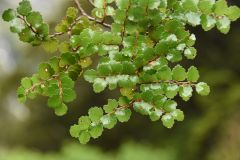
Smaller,thicker leaves than N. fusca. Leaf more triangular, with rounder teeth. |
|
|
Nothofagus solandri var.cliffortioides |
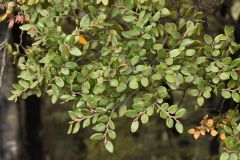
Ovateleaves that lack toothing. Found at high elevation. Can be difficult todistinguish from Nothofagus solandri var.solandri, especially in hybridzones. |
|
|
Nothofagus solandri var.solandri |
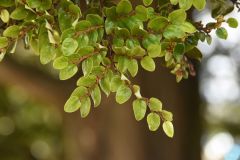
Leavessimilar to var. cliffortioides above, but typically longer. Found at loweraltitudes. |
|
|
Phyllocladus alpinus |
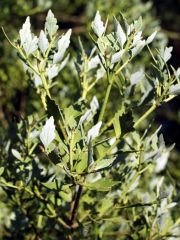
Phyllocladusleaves are flattened branchlets with very distinctive appearance. P. alpinushas a bluish tinge to the leaves (glaucous leaves). |
|
|
Podocarpus cunninghamii |
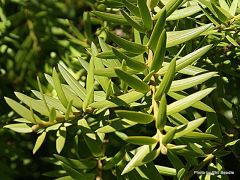
Hall’stotara has thinner bark than P. totara and is usually found at higherelevation. Adult leaves are very difficult to distinguish from P. totara,but P. cunninghamii has a deeper and broader groove on upper leaf surfacethan P. totara. Podocarpus cunninghamii and P. totara oftenhybridise making identification more difficult in some locations. |
|
|
Podocarpus totara |
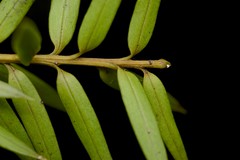
|
|
|
Podocarpus nivalis |
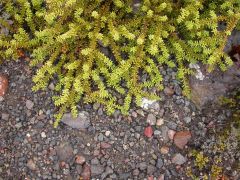
|
|
|
Prumnopitysferruginea |
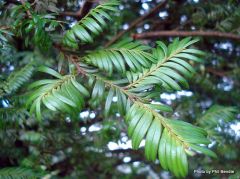
Small,elongated leaves that narrow evenly down the blade to a point. |
|
|
Prumnopitys taxifolia |
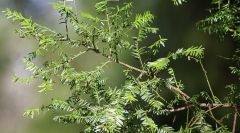
Leavescomparable to miro, except width is equal down most of the blade, and roundsoff only at tip. Finishes in a point. |
|
|
Pseudopanax arboreus |
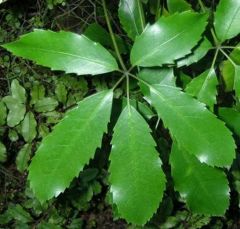
Palmateleaf, with 5-7 leaflets. Each leaflet has a distinct petiole. Thicker, shinierleaves than S. digitata. |
|
|
Pseudopanaxcolensoi |
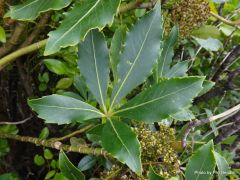
Mountainfive finger has 3-7 leaflefts, is distinguished from P. arboreus by itssessile leaflets – i.e. they lack a distinct petiole. Leaves can be yellowish,especially towards margins |
|
|
Pseudopanaxcrassifolius |

Juvenileleaves are long, narrow linear blades, often more than 30 cm in length. Adultleaves are broader, and shorter. |
|
|
Pseudopanaxedgerleyi |
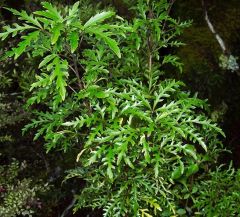
Juvenile foliage (top image) has incised margins with variable shapes.Adult foliage (lower) has entire leaf margin. |
|
|
Raukauasimplex |
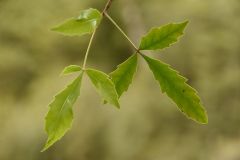
Juvenilefoliage (upper image) compound, with three leaflets. Adult leaf is similar toR. edgerleyi, but distinctively toothed. Branchlets reddish. |
|
|
Scheffleradigitata |
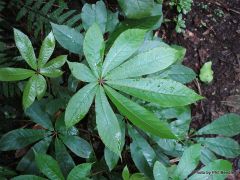
Mostsimilar to five finger. However, leaves are typically larger and much thinner;lightly hairy; compound leaf has up to 7-10 leaflets; serrations finer. |
|
|
Quintiniaserrata |
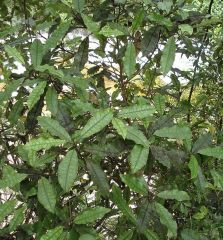
Brightleaves with contrasting venation. Wavy leaf margins. |
|
|
Weinmanniaracemosa |
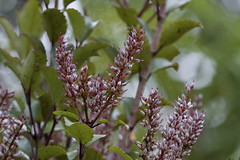
Tree has distinctive, whitish bark. Juvenile leaves are triplet, adult leaves are simple. |
|
|
Cyatheadealbata |
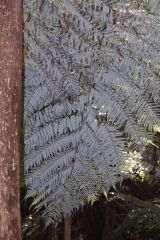
Distinctive by its silverunderside to the fronds |
|
|
Cyatheasmithii |
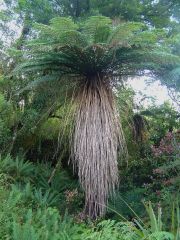
Distinctive by its skirt of dead stipes and fibroustrunk. |
|
|
Dicksoniasquarrosa |
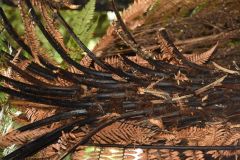
|
|
|
Dicksoniafibrosa |
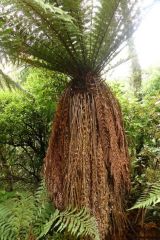
Distinctive by itsskirt of whole dead fronds whereas Cyatheasmithii has a skirt of dead stipes only. Both Dicksonia fibrosa and Cyathea smithii have thick fibrous trunks |

